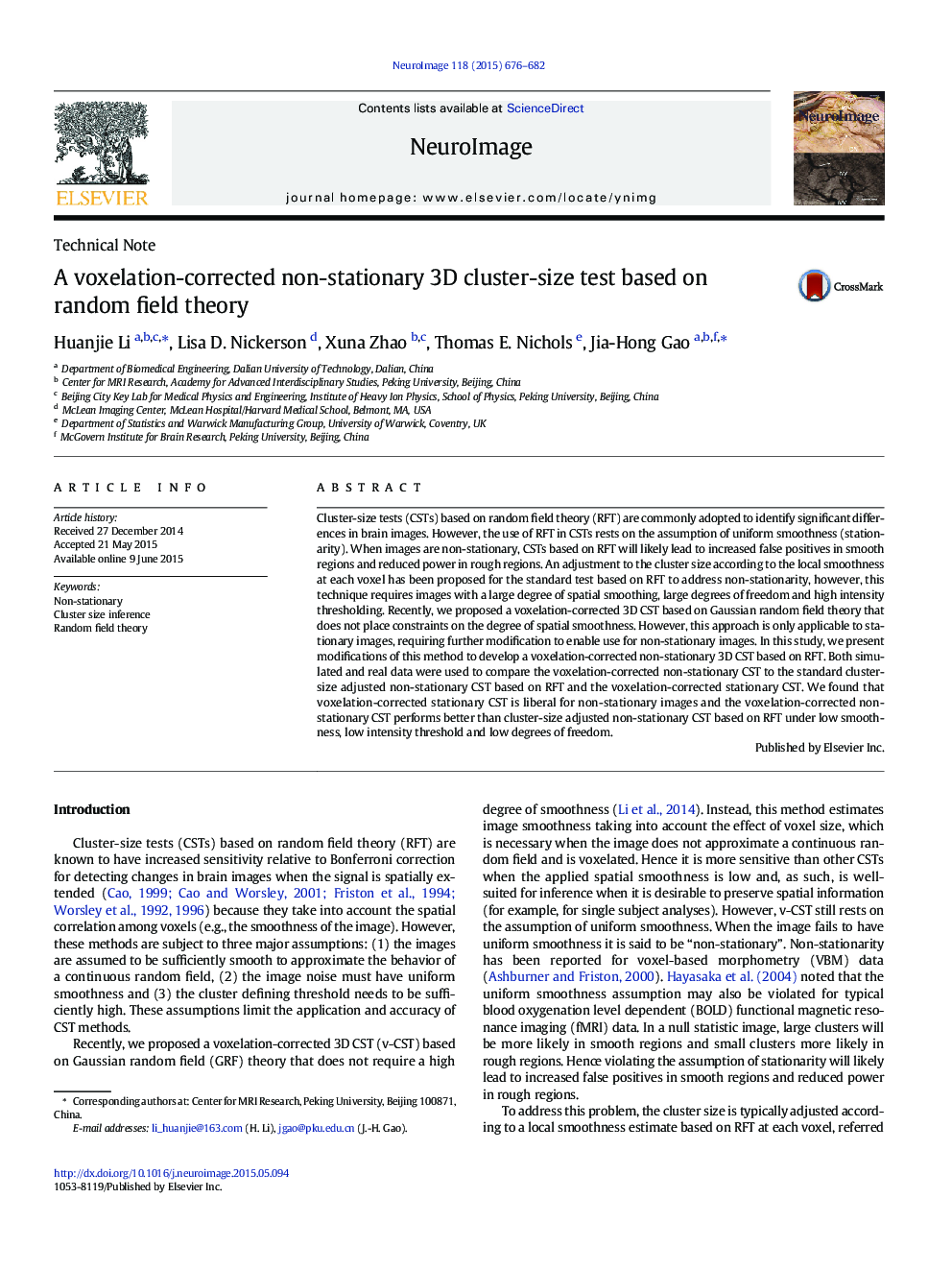| Article ID | Journal | Published Year | Pages | File Type |
|---|---|---|---|---|
| 6025199 | NeuroImage | 2015 | 7 Pages |
Abstract
Cluster-size tests (CSTs) based on random field theory (RFT) are commonly adopted to identify significant differences in brain images. However, the use of RFT in CSTs rests on the assumption of uniform smoothness (stationarity). When images are non-stationary, CSTs based on RFT will likely lead to increased false positives in smooth regions and reduced power in rough regions. An adjustment to the cluster size according to the local smoothness at each voxel has been proposed for the standard test based on RFT to address non-stationarity, however, this technique requires images with a large degree of spatial smoothing, large degrees of freedom and high intensity thresholding. Recently, we proposed a voxelation-corrected 3D CST based on Gaussian random field theory that does not place constraints on the degree of spatial smoothness. However, this approach is only applicable to stationary images, requiring further modification to enable use for non-stationary images. In this study, we present modifications of this method to develop a voxelation-corrected non-stationary 3D CST based on RFT. Both simulated and real data were used to compare the voxelation-corrected non-stationary CST to the standard cluster-size adjusted non-stationary CST based on RFT and the voxelation-corrected stationary CST. We found that voxelation-corrected stationary CST is liberal for non-stationary images and the voxelation-corrected non-stationary CST performs better than cluster-size adjusted non-stationary CST based on RFT under low smoothness, low intensity threshold and low degrees of freedom.
Keywords
Related Topics
Life Sciences
Neuroscience
Cognitive Neuroscience
Authors
Huanjie Li, Lisa D. Nickerson, Xuna Zhao, Thomas E. Nichols, Jia-Hong Gao,
